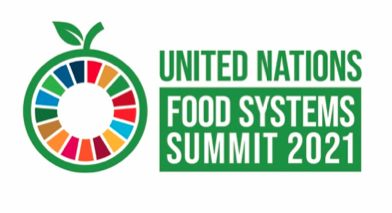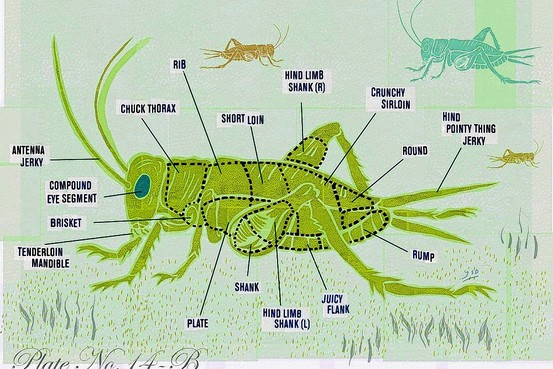In preparation for the United Nations Food Systems Summit 2021, various topics and actions have been flagged as essential to achieving Sustainable Development Goals by 2030. The Food Systems Summit dialogues aim to bring together stakeholders from different socioeconomic backgrounds and regions worldwide to collaborate, educate and take action towards a more sustainable future for all. The five Action Tracks are intertwined and designed to address trade-offs with other tracks and identify solutions. These Action Tracks will bring together knowledge from key players all over the world to optimise food systems with the aim of developing sustainable, climate smart solutions.

The five Action Tracks listed below interconnect to meet the Sustainable Development Goals.
1. Ensure access to safe and nutritious food for all
2. Shift to sustainable consumption patterns
3. Boost nature-positive production
4. Advance equitable livelihoods
5. Build resilience to vulnerabilities, shocks and stress
Transition to alternative protein sources
According to the food systems summit AT2 public forum, some of the main actors for AT2 are government/policymakers; therefore, this an excellent place to start. Transitioning to different consumption patterns is essential to reducing/preventing deforestation, protecting biodiversity and maintaining a stable climate for generations to come. Policies and initiatives need to be created to push the transition from meat to alternative, more sustainable protein sources.
One innovation that could push the transition to more sustainable consumption patterns is a change in policy, funding, and educational opportunities—encouraging farmers to consider shifting from livestock intensive farming to the incorporation of alternative forms of protein cultivation such as insect farms.
A significant part of this innovation is the transition to alternative protein sources such as insects reducing the heavy reliance on livestock farming.

Challenges for Farmers
The transition from livestock to alternative protein sources will come with its’s challenges, that both farmers and consumers are likely to experience. Overcoming these challenges is one of the main factors for Governments and Policymakers when developing this innovation. The farmers themselves may pose the most significant challenge with potential concerns arising from lack of knowledge on mealworm production, lack of funding to facilitate the transition, and farmers who may be reluctant to change traditional farming practices. When it comes to farmers changing methods, it can often be a tricky process. Traditional methods are often favoured as they have been proven for generations, feeding people in all parts of the world with sizable populations. Farmers use modern agricultural practices in all regions, but a staggering 2 billion people still use traditional methods worldwide (Singh and Singh, 2017).
The majority of farmers who continue traditional practices tend to be smallholder farmers. This may be linked to the likelihood of these small farmers having little education on more advanced techniques. This tends to be the case in many areas with smallholder farmers. For example, in Madagascar, research showed that smallholder farmer education levels were low, with 27% of the farmers lacking any formal education and an additional 48% having completed primary school’ (Harvey et al., 2014)
This leads to the next challenge the transition faces, education. To encourage a shift to more sustainable consumption methods, policymakers must address and provide educational opportunities and support to farmers.
The third challenge that the farmers themselves may pose is the cost of the transition. It is essential for Policy Makers to protect livelihoods. There will likely be a decline in the demand for protein cultivated using traditional cattle and pig farming methods. The supply of funds to allow farmers to prepare for the transition is significant as, without these, farmers may be reluctant to change, leading to issues with the transition. Governments will need to do everything possible to encourage the shift to alternative protein sources.
Challenges for consumers
The consumers pose some different challenges. The idea of education on the need for and benefits of more sustainable consumption patterns is one challenge that overlaps between farmers and consumers. For consumers to acknowledge the need to change, people worldwide need to be educated on why such a transition is necessary.
In order to the transition, an emphasis will need to be placed on ensuring the alternative protein sources are more cost-effective and easily accessible. The introduction of incentives to change by creating a price difference between meat and more sustainable protein sources, an example of this would be taxation of high saturated fat red meat, similar to the sugar tax already in place.
Finally, the ‘yuck’ factor may be the most significant challenge to overcome for the consumer. The idea of consuming insects instead of meat will seem ridiculous to many people, especially those unfamiliar with the need for more sustainable food consumption. It is essential to challenge social norms and normalise insects in the human diet.

Benefits of the Transition
The benefits of this transition will be global; more sustainable food consumption will help all regions for generations to come. Benefits to health, livelihoods, economies, biodiversity, land use and deforestation are only a number on the endless list.
In recent years human health in most regions has been affected by diet-related health complications such as cardiovascular disease, cancer, type 2 diabetes and obesity. At the same time, other communities face the burden of undernutrition. The shift to sustainable consumption patterns can
The transition can protect livelihoods in the future. For generations, people have relied on stable conditions and traditional methods of agriculture. However, the new challenges posed by climate change and warming temperatures, coupled with the shifting consumer demands, new techniques and procedures are required to protect the livelihoods of those dependent on agriculture to survive.
According to the UN environment program, one-third of global food production relies on animal and insect pollination. Annually this service is valued at around 200 billion dollars, and this will not be possible in the future without a shift in sustainable consumption patterns.
The benefits to biodiversity, land use and deforestation are apparent. A scale back on livestock farming has benefits, including reduced methane emissions, the protection of wildlife ecosystems due to a reduction in the need for deforestation. A business as usual scenario would see an increase in the demand for grazing land for animals and land for fodder production, fuelling the growing issue with land use and deforestation. This innovation will promote consumer demand for sustainably produced food, improving human nutrition and strengthening local value chains. This innovation also draws attention to the fact that a transition towards more nutritious food that requires fewer resources to produce, which is essential for the projected population growth by 2050.
References
Singh, R., Singh, G.S. Traditional agriculture: a climate-smart approach for sustainable food production. Energ. Ecol. Environ. 2, 296–316 (2017). https://doi.org/10.1007/s40974-017-0074-7
Harvey, C. A., Rakotobe, Z. L., Rao, N. S., Dave, R., Razafimahatratra, H., Rabarijohn, R. H., Rajaofara, H., & Mackinnon, J. L. (2014). Extreme vulnerability of smallholder farmers to agricultural risks and climate change in Madagascar. Philosophical transactions of the Royal Society of London. Series B, Biological sciences, 369(1639), 20130089. https://doi.org/10.1098/rstb.2013.0089